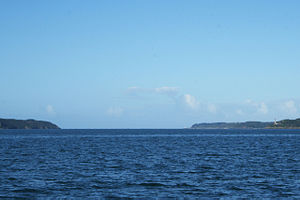
48°19′00″N 4°35′50″W / 48.31667°N 4.59722°W
The Childers Incident of 2 January 1793 marked the opening shots between British and French forces during the French Revolutionary Wars, the first phase of a 23-year-long war between the two countries. Following the French Revolution of 1789, diplomatic relations between the Kingdom of Great Britain and the French Republic had steadily deteriorated and France was in political and social turmoil. One of the strongest hotbeds of republican activity was the principal Atlantic naval base of the French Navy at Brest in Brittany, the scene of a significant mutiny in 1790.
On 2 January a small British warship, the 14-gun brig HMS Childers under Commander Robert Barlow, was ordered to enter the Roadstead of Brest to reconnoitre the state of readiness of the French fleet. As Childers entered the Goulet de Brest, the vessel came under fire from French batteries flying the tricolour. Although Barlow clearly identified his brig as a neutral British vessel the fire continued until he was able to withdraw. Although Childers had been struck by a 48 lb (22 kg) cannonball, none of the crew were wounded. The incident was of itself inconsequential, with minimal damage and no casualties on either side, but it marked a symbolic moment in the deterioration of relations between Britain and France in the approach to war, which broke out on 1 February 1793.